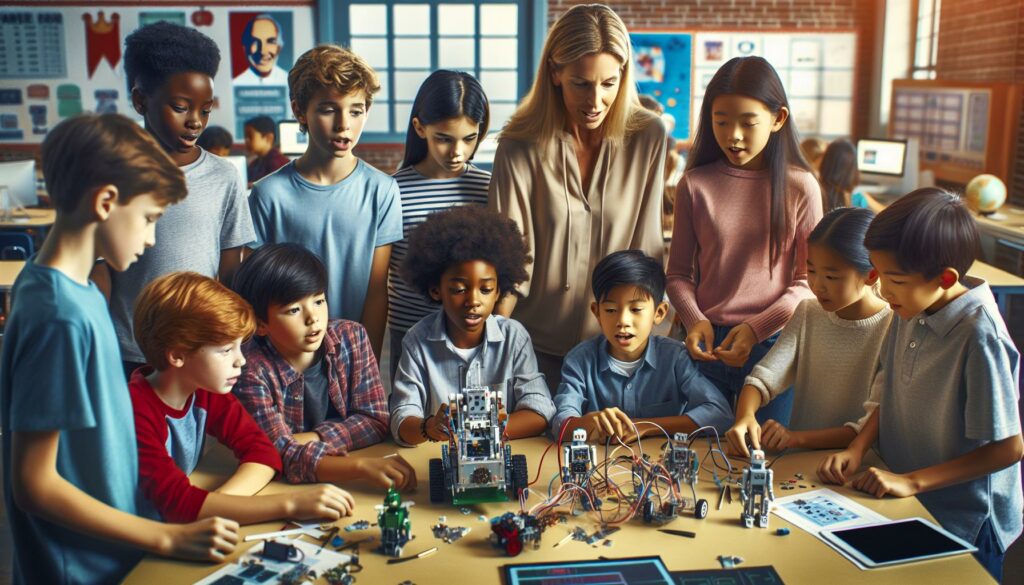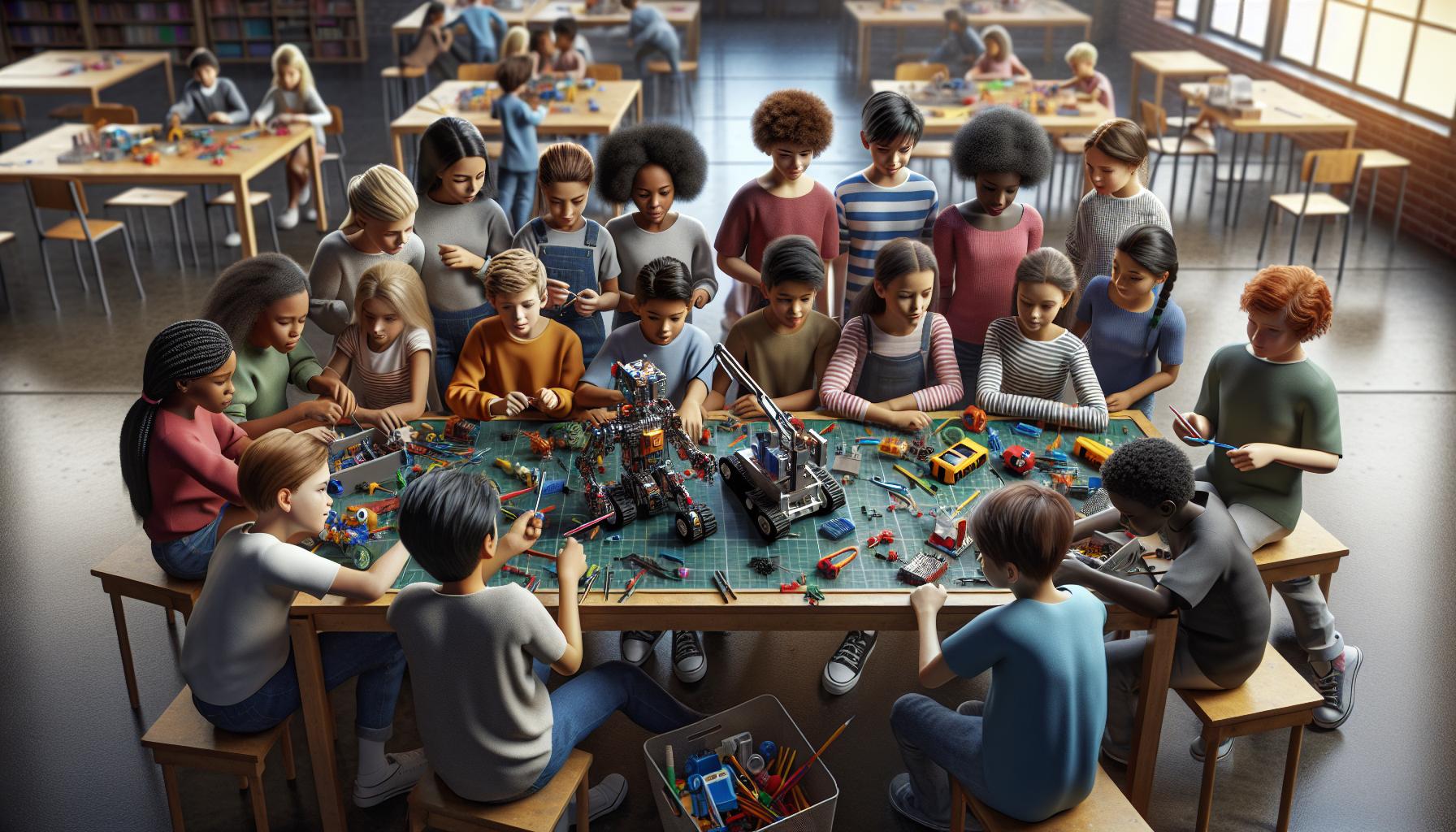Every year, National Robotics Week sparks excitement and innovation, celebrating the incredible advancements in robotics technology. It’s a time when enthusiasts, educators, and industry leaders come together to showcase how robots are transforming our lives. From autonomous vehicles to robotic assistants, these machines are not just tools; they’re shaping the future.
I find it fascinating how this week inspires curiosity and creativity among people of all ages. Schools host events, workshops, and competitions, encouraging students to dive into the world of robotics. Whether you’re a seasoned engineer or a curious beginner, National Robotics Week offers something for everyone, igniting a passion for learning and exploration in this dynamic field.
Key Takeaways
- National Robotics Week takes place annually in April, celebrating the advancements and applications of robotics across various sectors like healthcare, manufacturing, and education.
- The event engages a diverse audience by offering workshops, competitions, and demonstrations, fostering teamwork and problem-solving skills among participants.
- Since its establishment in 2010, National Robotics Week has evolved significantly, achieving important milestones such as congressional recognition and the adaptation to virtual events during the pandemic.
- A key focus of National Robotics Week is promoting STEM education and inspiring young minds to consider careers in science, technology, engineering, and mathematics.
- Local initiatives and partnerships with educational institutions and industry leaders enhance community involvement, providing valuable resources and mentorship for aspiring robotics professionals.
- The week showcases significant advancements in robotics technology, highlighting innovations such as autonomous vehicles and smart assistants that are shaping the future.
National Robotics Week
National Robotics Week takes place annually in April, celebrating innovations and applications in robotics. This week highlights the contributions of robots, spanning sectors like healthcare, manufacturing, and education. National Robotics Week aims to engage individuals, from young students to seasoned engineers, in understanding robotics’ role in society.
Events occur nationwide, including workshops, demonstrations, and competitions. Organizations partner with schools to inspire the next generation of scientists and engineers. Educational institutions often host robotics competitions that foster teamwork and problem-solving skills. Participants engage with hands-on projects, encouraging curiosity in the field of robotics.
Numerous resources, such as online platforms and local organizations, offer workshops and classes during this week. These initiatives promote learning about programming, design, and functionality of robots. Additionally, companies may showcase their latest robotic technologies, providing insights into future trends.
Overall, National Robotics Week serves as a catalyst for innovation and collaboration within the robotics community. It encourages exploration and creativity while demonstrating how robotics shapes our daily lives and future advancements.
History of National Robotics Week
National Robotics Week started as a way to highlight the advancements in robotics and promote enthusiasm for the field. Over the years, it evolved into an important annual event that engages a diverse audience.
Origins and Establishment
National Robotics Week began in 2010. The week was initiated by numerous robotics organizations and experts who recognized the need to boost interest in robotics among students and the general public. The timing in April complements the spring season, symbolizing growth and innovation. A key goal of the week is to inspire collaboration between industry professionals, educators, and students, encouraging them to explore robotics’ potential.
Key Milestones
Several significant milestones marked the evolution of National Robotics Week:
- 2010: The first official National Robotics Week takes place, engaging schools and communities nationwide.
- 2011: The week gains congressional recognition, enhancing its visibility and outreach.
- 2015: Growth in participation leads to over 1,000 registered events across the country, showcasing various robotics technologies.
- 2018: Partnerships with educational institutions increase, featuring more competitions and hands-on workshops.
- 2020: The first virtual events emerge due to the pandemic, expanding access to robotics resources for individuals unable to participate in-person.
- 2023: The event marks its 13th anniversary, with increased global participation and emphasis on the importance of ethical robotics.
These milestones demonstrate the ongoing impact of National Robotics Week and its role in promoting robotics. Each year, it continually adapts, nurturing a vibrant community of innovators and learners in the robotics field.
Activities and Events
National Robotics Week features a variety of activities and events designed to engage diverse audiences. Participants can immerse themselves in workshops, competitions, and demonstrations that showcase the latest in robotics technology.
Workshops and Demonstrations
Workshops and demonstrations serve as a hands-on way to explore robotics. Educational institutions and tech centers host interactive sessions where attendees learn about programming, design, and operation of robots. For instance, sessions may cover topics like Arduino programming or robot navigation algorithms. Organizations often collaborate with schools, providing resources and expert instructors to facilitate the workshops. Demonstrations feature real-time showcases of robots in action, illustrating practical applications across sectors such as healthcare and manufacturing. These events often inspire creativity and innovation while helping participants develop essential skills for future applications.
Competitions and Challenges
Competitions and challenges form the backbone of National Robotics Week, promoting excitement and collaboration. Many schools participate in robotics competitions that demand teamwork and problem-solving. Events such as the FIRST Robotics Competition and VEX Robotics Challenge encourage students to design, build, and program robots to complete specific tasks. These competitions foster friendly rivalries, pushing teams to innovate and enhance their skills. Online challenges also play a significant role, enabling remote participants to engage in coding or building challenges from any location. By participating in these events, individuals gain experience and confidence, motivating them to further explore the field of robotics.
Impact on Education and Industry
National Robotics Week significantly influences education and industry, driving interest in robotics and its applications. Through various events, it fosters a deeper understanding of technology.
Promoting STEM Education
Promoting STEM (Science, Technology, Engineering, Mathematics) education stands at the forefront of National Robotics Week initiatives. Schools engage students in robotics workshops and competitions, offering hands-on experiences that spark interest in STEM fields. Programs like FIRST Robotics and VEX Robotics Challenge cultivate teamwork, critical thinking, and problem-solving skills among participants. Educational resources, such as online tutorials and local classes, equip learners with programming and design knowledge. By showcasing real-world applications of robotics, National Robotics Week encourages the next generation to pursue careers in STEM.
Advancements in Robotics Technology
Advancements in robotics technology emerge prominently during National Robotics Week events. Companies showcase cutting-edge innovations, imparting knowledge about the latest trends in automation, artificial intelligence, and robotics design. Demonstrations highlight practical applications in industries such as healthcare, where robotics enhance precision in surgery, and manufacturing, which benefits from increased efficiency through automation. Engaging discussions and workshops reveal future possibilities, such as autonomous drones and smart assistants. National Robotics Week serves as a vital platform for exploring these advancements, inspiring collaboration between educators, industry leaders, and aspiring engineers.
Community Involvement
National Robotics Week thrives on community engagement, with various initiatives encouraging local participation and collaboration. Communities come together to promote robotics education and inspire young minds through hands-on activities.
Local Initiatives
Local initiatives play a crucial role in National Robotics Week. Schools, libraries, and community centers often organize events like robotics workshops, coding classes, and open house demonstrations. For instance, students can join after-school robotics clubs that facilitate learning through project-based experiences. Events like community robotics fairs highlight local talent, featuring competitions where teams showcase their designs. These initiatives cultivate interest in STEM fields and offer pathways for students to explore future careers in robotics.
Partnerships and Collaborations
Partnerships and collaborations amplify the impact of National Robotics Week. Educational institutions often partner with local businesses and industry leaders to sponsor events and provide resources. For example, tech companies sometimes donate equipment or offer mentorship to teams participating in robotics competitions. Non-profit organizations also collaborate, organizing workshops that target underrepresented groups in tech. Such partnerships not only enhance resource availability but also create networking opportunities for aspiring engineers and innovators. Through these collaborations, communities strengthen their resolve to foster a new generation equipped to thrive in a technology-driven world.
The Importance of Robotics in Our Daily Lives
National Robotics Week is more than just an annual celebration; it’s a movement that ignites passion and curiosity in the field of robotics. I’ve seen firsthand how engaging activities and competitions can inspire individuals of all ages to explore this fascinating technology.
As we look to the future, the importance of robotics in our daily lives and various industries continues to grow. It’s exciting to think about the innovations on the horizon and the role we all can play in shaping that future.
I encourage everyone to get involved, whether through local events or online challenges. Together, we can foster a community that thrives on creativity and collaboration, paving the way for the next generation of robotics enthusiasts and experts.




